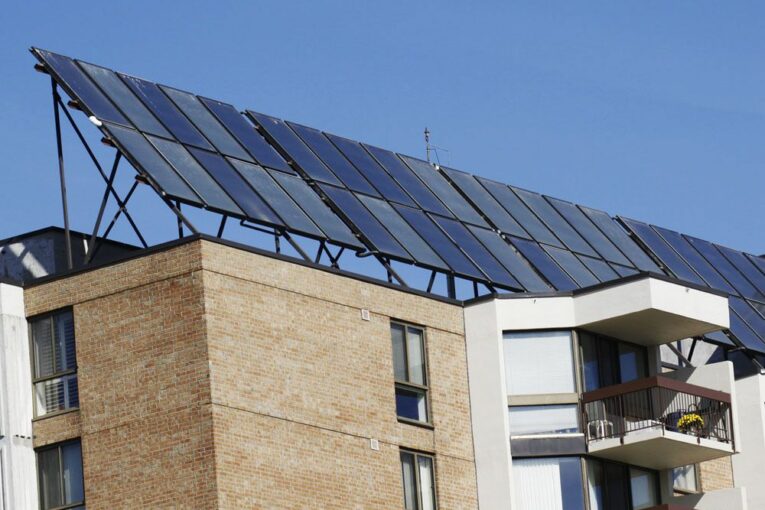
Rising development charges and insufficient incentives are stifling some major municipalities’ efforts to encourage developers to build green.
In Toronto, for example, increases in development charges — including building and planning fees, and parkland dedication — have far outpaced the evolution of green building incentives.
“Between 2016 and 2020, Toronto has upped development charges 120 per cent, while development charge rebates incentivizing builders to adopt geothermal energy to reduce carbon footprints has increased only 16 per cent,” said Matthew Tokarik, president of Subterra Renewables, a Toronto-based green energy supplier. “That’s too modest a change to keep developers incentivized to build green.”
In Toronto, 22 per cent of the cost of new condominiums goes to government charges, up from 18.7 per cent in 2013. In Brampton and Markham, these charges account for up to 30 per cent of the cost of a new home. At 16.3 per cent, Bradford represents the low end in Ontario.
What that means is that government charges constituted $164,500 of the purchase price of a $750,000 Toronto condo in 2019. The same amount is built into new home purchases in Markham, but on a lesser purchase price of $532,000.
While geothermal systems are much cheaper to operate than fossil fuel systems, they’re significantly more capital-intensive to construct. But there’s no doubt about the environmental payoff, as geothermal technology reduces heating and cooling energy consumption by some 60 to 80 percent — so much so that the University of Toronto is currently completing a conversion of its entire downtown campus.
“Geothermal adoption is an integral part of the net-zero recipe at the municipal level,” Tokarik said. “These systems are to the building sector what electric vehicles are to the transportation sector, so we’ve got to find a way to get them into new construction,” Tokarik said.
Aggravating the situation is the Ford government’s decision to scrap the GreenON program when the Tories took office in 2018. The program provided incentives to homeowners seeking to make their homes more energy efficient.
It’s not that cities like Toronto lack the desire to pursue net-zero.
“The problem is that the City wants new home purchasers to pay for these social objectives,” says Leor Margulies of Toronto, who leads Robins Appleby LLP’s real estate group. “So the fight’s between homeowners who don’t want to pay more property tax and tenants seeking more affordable housing.”
Meanwhile, Calgary’s development levies aren’t nearly as high as most in Ontario, so there’s not nearly as much room to use reduced development charges as a trade-off incentive for adopting geothermal energy and other energy-saving processes.
But off-site levies (OSL), which fund the construction and installation of new and expanded municipal infrastructure and which amount to $500,000 per project hectare in Calgary, may be fertile ground. OSL, aimed at the cost of water, sanitary and storm sewers, roads, community recreation facilities, police stations, fire halls and libraries, differ from site-specific development charges.
“OSL reductions and even development charge reductions can be powerful incentives for developers’ green energy initiatives,” said Preet Saini, a construction and infrastructure lawyer in McMillan LLP’s Calgary office. “Calgary doesn’t really have any significant incentives at this time, and it remains to be seem how amenable the City is to trade-offs.”
As it turns out, City Council is currently reviewing the OSL bylaw.
“The new council will consider the issue in 2022,” says Stan Sandhu, a former policy advisor to the City who’s running for city councillor in the October municipal election. “So we’re on the right path, but there’s still a lot of work to do.”
Earlier this month, the federal government announced the first recipients of the Green and Inclusive Community Buildings (GICB) program, aimed at supporting the development of green and inclusive community buildings across Canada through retrofits, repairs, upgrades, and new builds by supporting projects that will reduce energy waste and emissions, enhance climate resiliency, and contribute to more accessible and inclusive community spaces. The projects were in Newfoundland and Labrador, Nova Scotia and two projects in Alberta.
“As part of the Strengthened Climate Plan, GICB will deliver $1.5 billion in funding over the next five years to projects that improve the places where Canadians gather, access services, and connect with others in the community, while saving energy, cutting pollution, and creating thousands of good jobs,” according to a government press release.
The International Energy Agency says the world needs to rolloutzero‐carbon‐ready building energy codes by 2050, which would require retrofit rates of 2.5 per cent each year by 2030, up from less than 1 per cent today. The IEA’s ambitious net-zero emissions target means more than 85 per cent of all buildings should be ‘zero-carbon-ready’ and heating and new buildings’ power consumption is a fifth of the energy required today.
You can read more of the news on source
